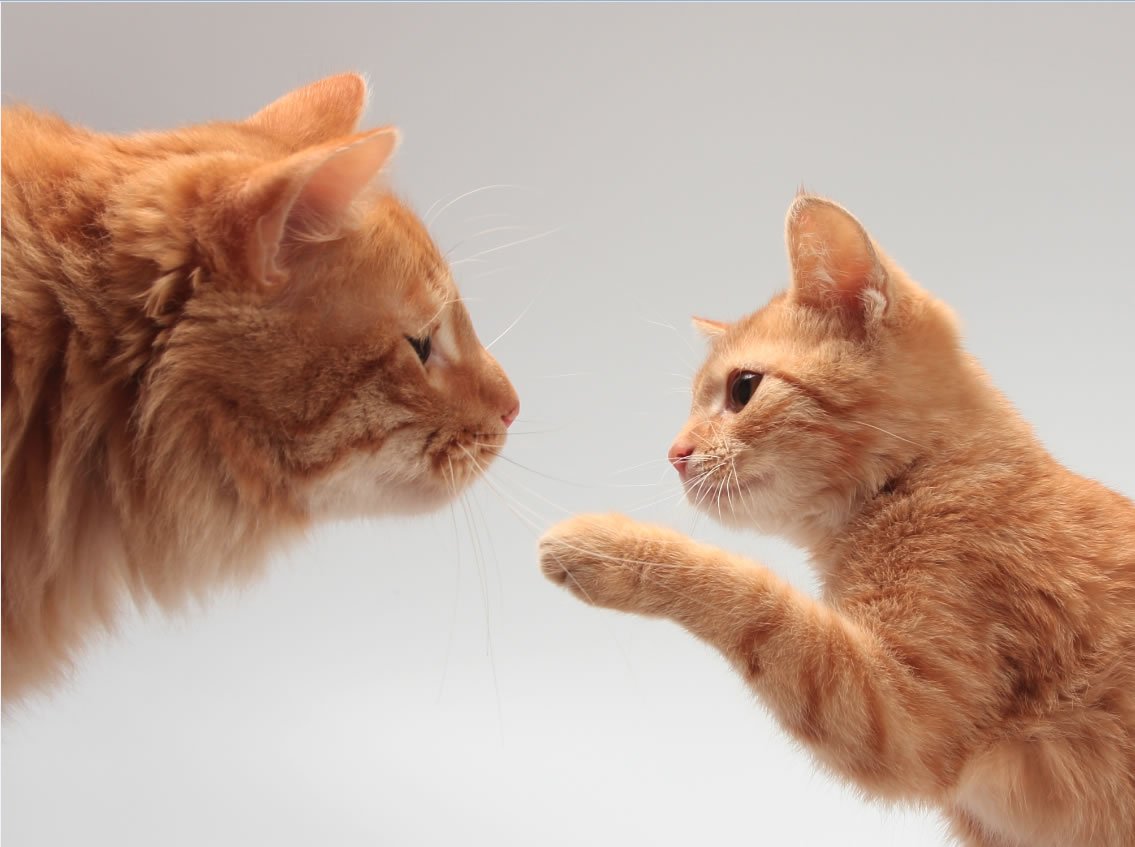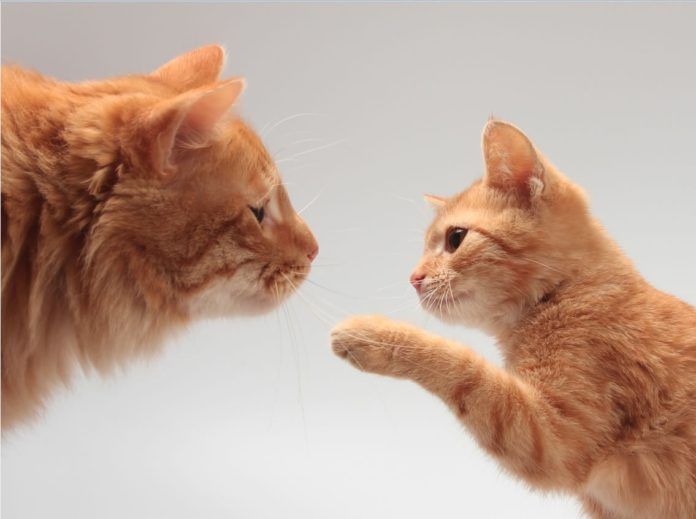Moyakov | Dreamstime.com

At eight years of age, your cat Boris continues to look terrific — the way he’s always looked — and to behave with nearly the same mischievous vitality that he’s displayed since he was a kitten. Unfortunately, this isn’t going to go on forever. Considering that the feline age of eight is roughly equivalent to the age of 40 or so in a human, your beloved Boris — as trim and spirited as he is at present — is likely to start showing the normal signs of aging in the not-so-distant future.
Currently, veterinary experts consider cats to be in the “mature” stage between the ages of eight and 10; in the “senior” stage (equivalent to 65 years of age in a human) between the ages of 11 and 14; and in the geriatric stage at 15 years and older.
Gray zone of middle age
“Some cats are still doing very well at the age of 13 or 14,” says Nicholas Dodman, BVMS, former director of the Animal Behavior Clinic at Tufts, “whereas others are beginning to show pronounced signs of aging. Middle age for a cat, which is between eight and 10 years of age, is a kind of gray zone, during which the cat is busily engaged in the process of life, without any significant physical or mental deterioration to hamper him. But somewhere toward the end of middle age, cats start acting and feeling their age.”
The normal age-related physical and behavioral changes that Boris is likely to start experiencing several years from now may appear subtly at first, but will no doubt become more obvious as time passes. For an owner, knowing what to expect can be very useful as a means of distinguishing the normal changes from those that may be associated with a serious physical disorder that calls for prompt veterinary attention.
In general, Dr. Dodman points out, “Older cats, like people, become less active mentally and physically. Part of the reason for this has to do with changes that take place in the brain. But physical factors, such as joint stiffness, may also play a role.”
Age-related behavioral changes, he notes, may include a decline in activity, less playing and increased sleeping time. Following are some other possible behavioral changes:
- Cats tend to groom themselves less as they grow older, so their coats may become unkempt, matted, and less glossy. And because of increasing stiffness in their joints, which is often caused by arthritis, they may not use their scratching posts enough to keep their claws trimmed and in good condition. Consequently, owners should be increasingly attentive to grooming their cats as the animals get older.
- Sleeping patterns may change with age, but any dramatic change in the length of time a cat sleeps during a 24-hour period should be brought to the attention of a veterinarian, since this could be a sign of disease.
- Compared to their eating habits when they were young, older cats tend to prefer smaller meals, and they like to eat several times during the course of a day. In most cases, this is merely a reflection of their naturally changing metabolism. But any cat who either starts eating voraciously or shows a total lack of interest in his food should be seen by a vet.
- An aging cat’s litter box behavior often changes for the worse, frequently due to stiff joints that impede the animal from hopping into and out of the box. Owners of an elderly cat might want to provide multiple litter boxes, placed strategically throughout the house, or to use a three-sided litter container that enables an animal’s easy access to it.
- Common health issues
- A wide variety of physical problems, says Dr. Dodman, can often be associated with advancing feline age as well. For example:
- Loss of hearing and a decline in visual acuity may become noticeable among some senior cats. Gradual loss of hearing is the more common of the two; a serious decline in vision tends to occur in older cats who have high blood pressure.
- Dental problems intensify with age, and the accompanying pain, risk of systemic infection and inability to chew effectively increase significantly as a cat grows older. These health challenges are not the direct result of the aging process, but are often attributable to a lack of attention paid by cat owners to feline dental hygiene during an animal’s young life.
- Due to a natural loss of motility in the intestines, cats tend to experience constipation increasingly as they age. Owners of aging cats should watch for signs of constipation, which can often be easily remedied by a vet.
- An older cat’s musculoskeletal system can be impaired by muscle wasting, arthritis and spinal disc disease, problems that may be eased by medical or surgical treatment.
- Diabetes, which is usually a disease of older cats, is characterized by increased thirst and urine output, muscle wasting and liver disease.
- Various other serious health problems for which elderly cats are at risk include several types of cancer, impaired kidney function, endocrine gland disease and life-threatening heart and lung conditions.
Not to be overlooked among the afflictions that can pose a severe threat to an aging cat is feline cognitive dysfunction (FCD), a disorder similar to Alzheimer’s disease in humans that Dr. Dodman describes as “the slowing of a cat’s mental processes, a phenomenon that causes them significant impairment in their everyday lives.” Although some of the signs of age-related cognitive decline are similar to those of normal aging, he notes, it is the extent and nature of the deficits that distinguish true cognitive dysfunction from simple age-related slowing down.
Typical signs of FCD, says Dr. Dodman, include the following: An affected cat may wander aimlessly and appear lost or confused at times. He may fail to recognize family members and may no longer greet people or seek their attention. He may sleep more during the daytime but wander aimlessly throughout the night, perhaps crying out. And he may forget where his litter box is located and may no longer be concerned about personal hygiene. According to Dr. Dodman, the causes of FCD are at present unknown.
Dr. Dodman points out that there are several approaches that an owner can take to make life as healthy and pleasurable as possible for an aging cat. He recommends, for example, that such a cat be fed a diet rich in antioxidants — naturally occurring nutrients that improve an animal’s immune responses and slow the destructive process caused by certain molecules.
Be vigilant regarding the cat’s overall health, he advises. Schedule veterinary visits every six months or at least once a year. Brush the cat’s coat routinely and check for any suspicious signs, such as a lump on his skin. Play with the cat; make sure he’s getting plenty of daily exercise.
Environmental enrichment
“And it is very important,” says Dr. Dodman, “to provide your aging cat with an interesting, fulfilling life. Being stuck in the house all of the time, doing the same things every day will predispose him to both mental and physical problems. Try to increase his social opportunities with people and other friendly cats.” Dr. Dodman also suggests that owners consult their veterinarians regarding medications that might possibly reverse the signs of FCD, at least temporarily. — Tom Ewing




